MONTE CARLO - It takes about an hour to drive from Monaco, the most densely-populated country in Europe, to the Alpes-de-Haute-Provence, one of the least-densely populated departments of France. The scenery changes quickly: The mountains appear on the horizon as the skyscrapers shrink in the distance, and the commotion of city life gradually fades into a vast emptiness. The 2024 Aston Martin DB12, a new coupe designated as a “super tourer” by a brand seeking to reinvent itself, feels right at home in both settings.
Unveiled in May 2023, the DB12 replaces the DB11 with a new-look exterior design, a much longer list of interior technology features, chassis updates, and a more powerful V8 engine. It’s not entirely new, but an Aston Martin spokesperson told me it uses about 80% new components compared to the DB11.
Most of the visual changes are found up front, where the DB12 receives a bigger grille, redesigned lights, and a new-look bumper. It still looks like an Aston Martin; James Bond wouldn’t lose it in a parking lot. While big grilles stir a great deal of controversy, the mechanical updates made one necessary here.
“It has a larger grille because it has more power under the hood and that all needs cooling,” Marek Reichman, the head of the company’s design department, told me.
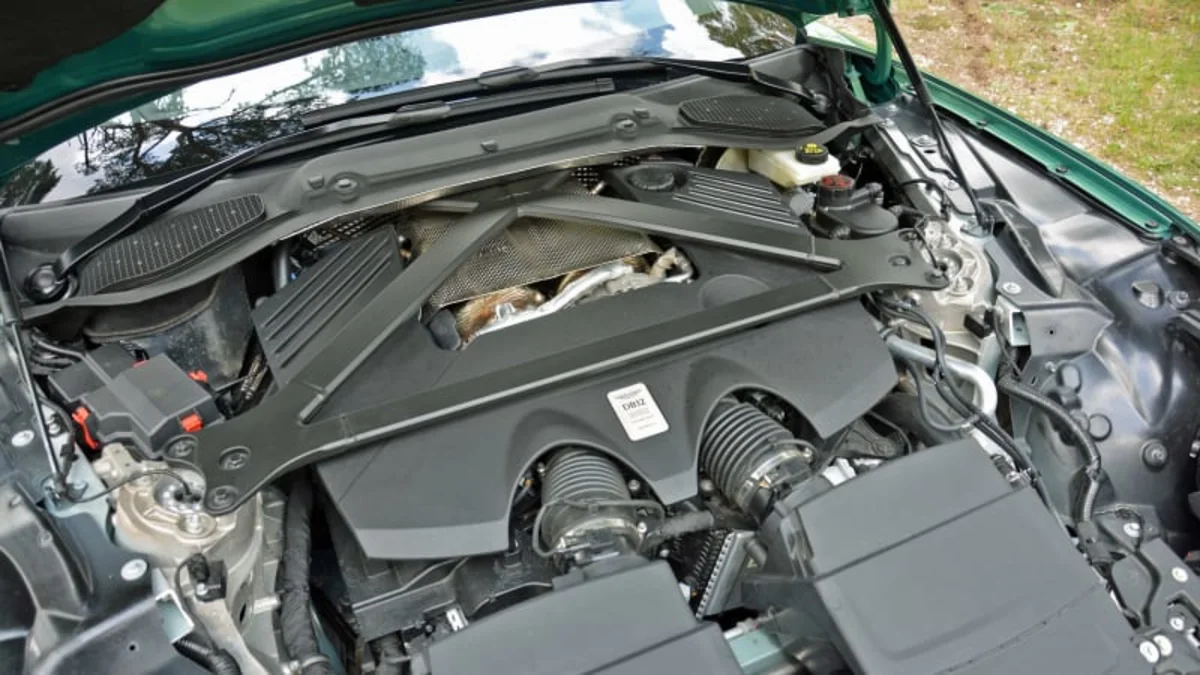
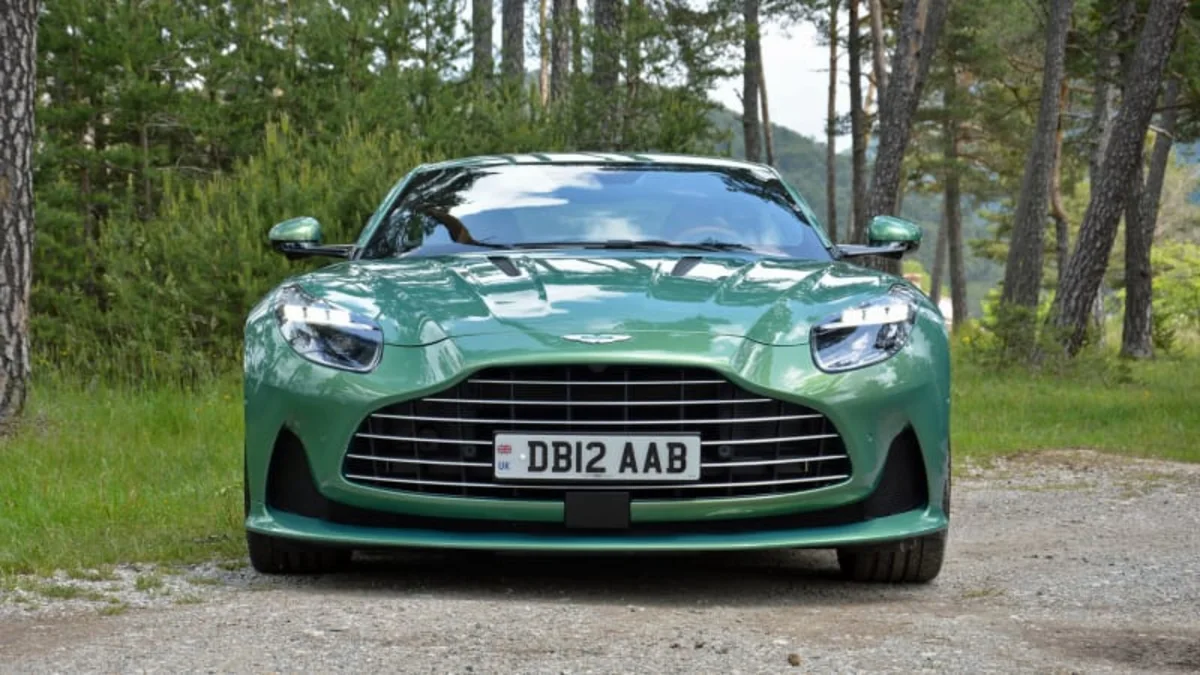
Literally and metaphorically, the reason behind the expanded grille is a 4.0-liter V8 engine that’s twin-turbocharged to develop 671 horsepower at 6,000 rpm and 590 pound-feet of torque from 2,750 to 6,000 rpm. It’s an evolution of the DB11’s V8, which was an evolution of the V8 that powers several 63-badged Mercedes-AMG models, but the outgoing car posted figures of 528 and 513, respectively. These numbers don’t tell the full story: They represent a huge increase in part because the V8 is effectively replacing the DB11’s optional V12 that developed 630 horsepower and 516 pound-feet of torque. That’s right, there won’t be a V12 available in an Aston Martin DB car for the first time in 30 years.
Aston Martin made several changes to the V8 before deeming it worthy of living under the DB12’s hood.
“We chose the turbos, we chose the cams, and we chose the compression ratio. Importantly, we had a huge influence on the powertrain’s characteristics through calibration,” Simon Newton, Aston Martin’s director of vehicle performance, told me. He added that the eight-speed automatic transmission has the same ratios as the DB11’s gearbox, but his team made the final drive 13% shorter for faster acceleration.
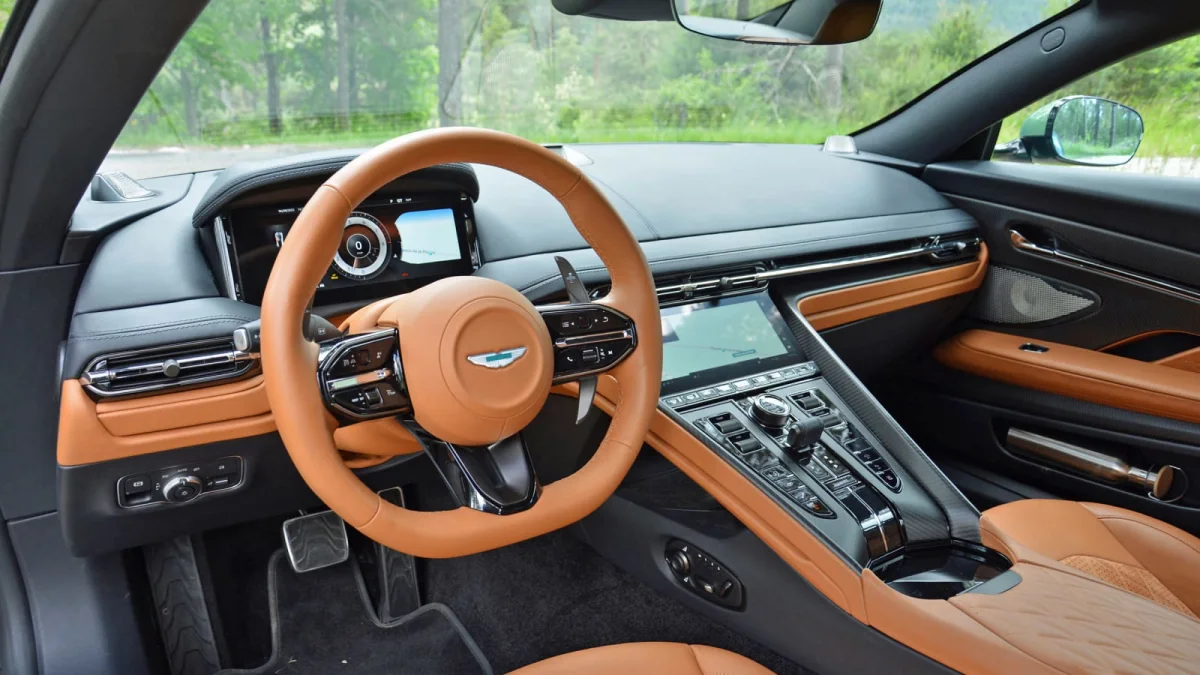
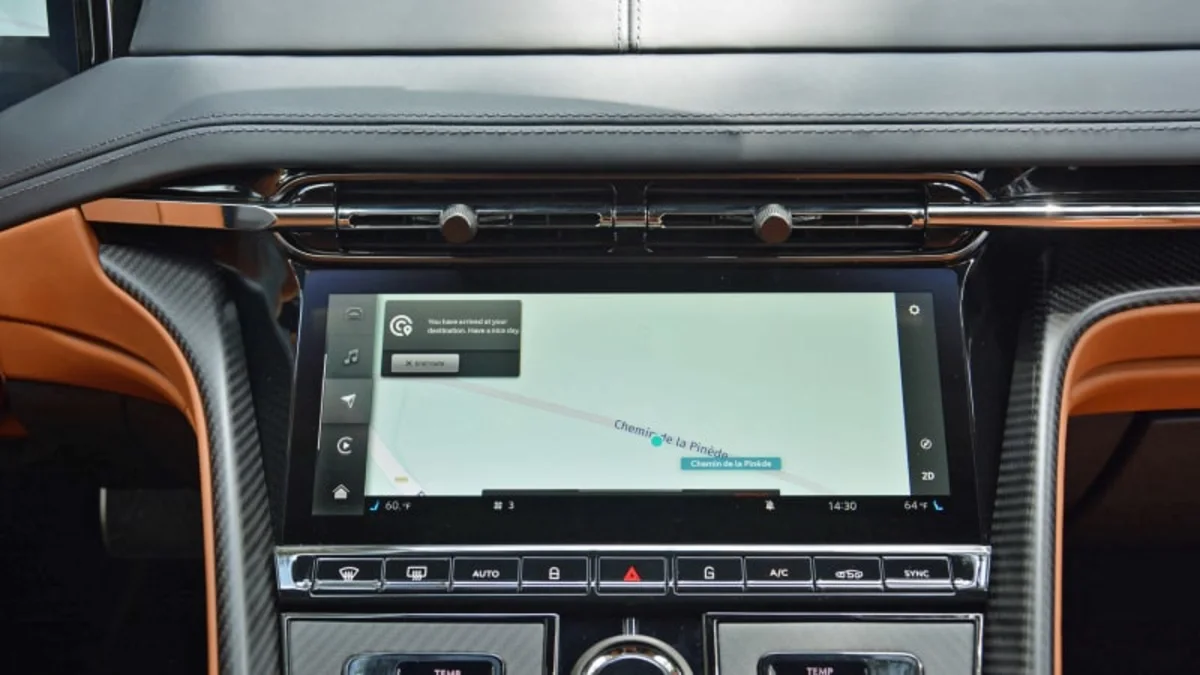
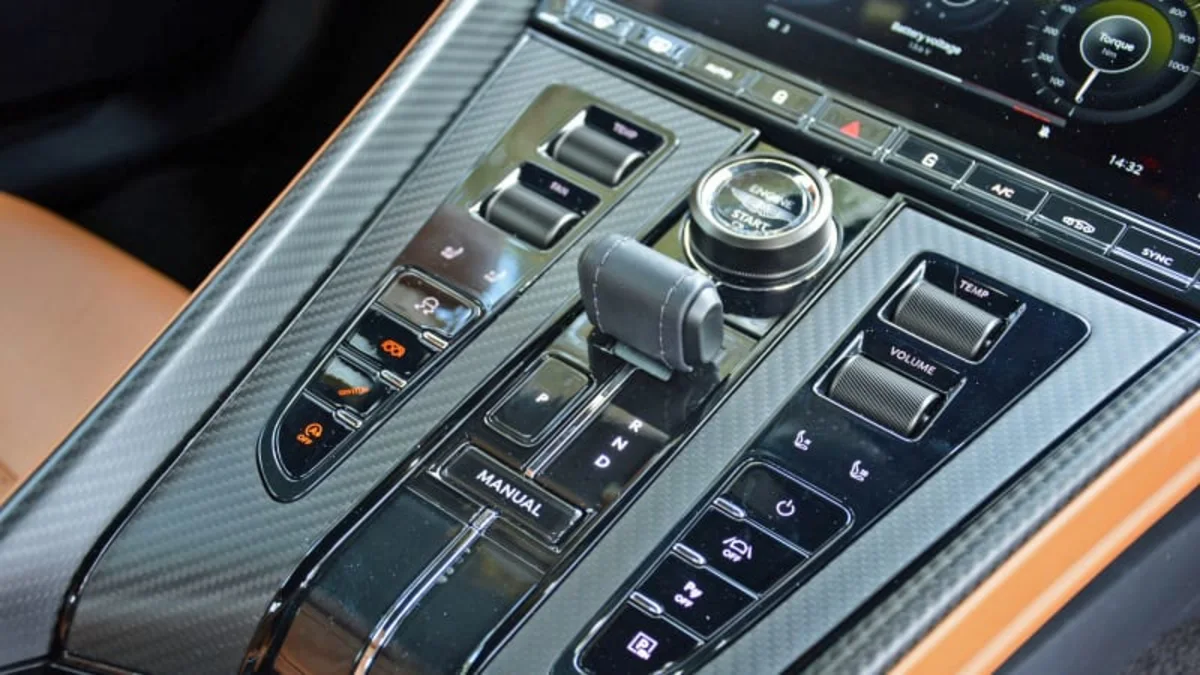
From the driver’s seat, the new infotainment system stands out as the most remarkable part of leaving the Monaco area in the DB12. I know, I know: “you’re in a 671-horsepower coupe and you’re geeking out over a giant smartphone?” Yes, and odds are you would as well. The DB11 — like many members of Aston Martin’s current range, including the DBX — came with an infotainment system based on older Mercedes-Benz technology with a touchpad and a dial instead of a touchscreen. It worked, it got you from A to B while blasting your favorite playlist, but it was clunky and unintuitive to use. In contrast, Aston Martin designed the new system in-house around a 10.25-inch touchscreen compatible with Apple CarPlay and Android Auto. Touch-sensitive technology alone makes this better than the outgoing system, and as a bonus the display offers sharp-looking graphics, intuitive menus, and a quick response time. It follows British etiquette, too: it politely tells you, “have a nice day” once you’ve reached your destination.
Thanks, car! You have a nice day, too.
As of writing, the new infotainment system is only found in the DB12. Aston Martin told me it plans to roll it out across its range in the next 12 to 18 months, which bodes well for upcoming additions to its line-up. While the system is a great improvement, the DB12 isn’t 100% digital — you won’t find wall-to-wall screens in here. Aston Martin aligned a row of buttons below the touchscreen for features like the rear defroster, and the climate control system’s buttons live further down on the center stack, above the switches used to select the different suspension and exhaust settings. A small, leather-upholstered shifter powered by shift-by-wire technology replaces the dash-top PRND shift buttons that have been an Aston Martin fixture since the DB9. They won’t be missed.
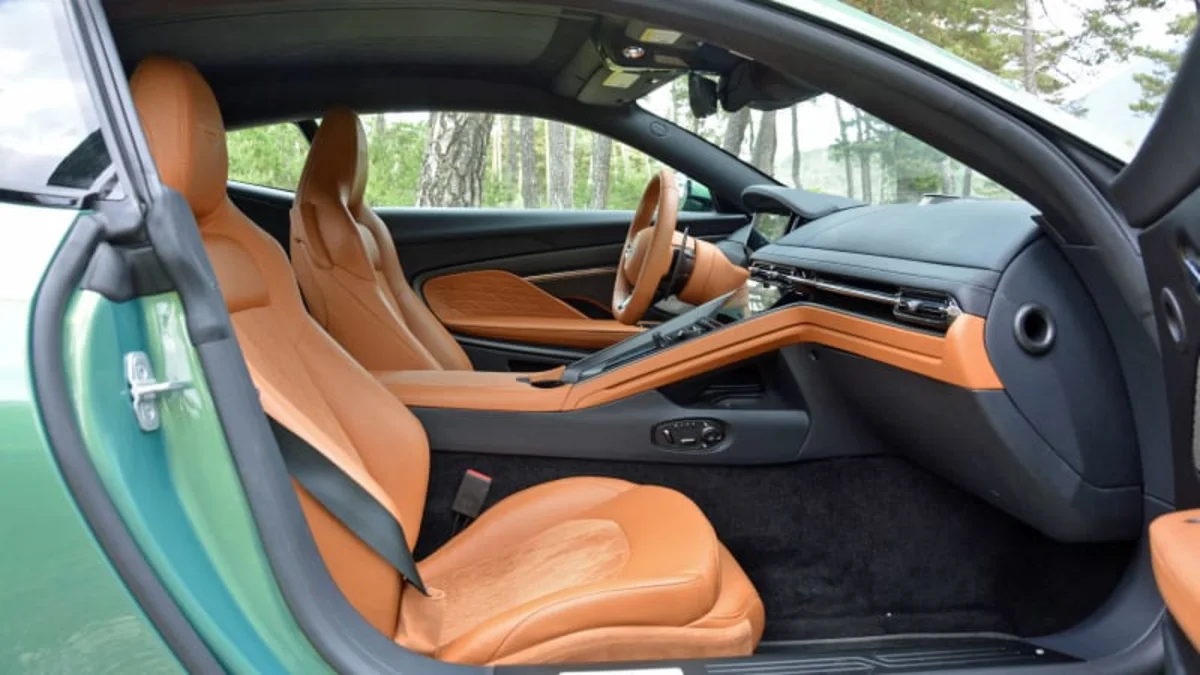
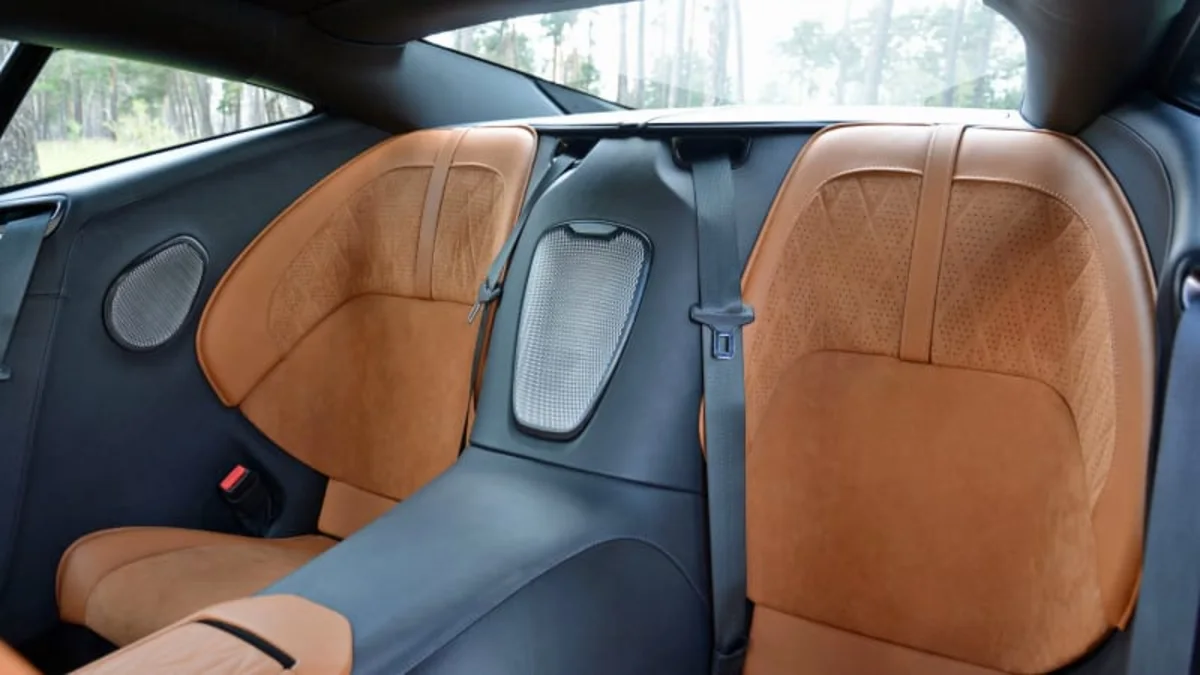
Beyond the touchscreen, the DB12 is a nice place to spend time thanks in part to pillar-to-pillar leather upholstery, seats pegged somewhere in the middle of the comfort-sport spectrum and one hell of a sound system. On the highway or around town, the exhaust isn’t overly loud if you don’t ask it to be (waking it up to better hear the V8’s symphony requires merely pressing a button). The big, shapely coupe turns quite a few heads, too, even in a part of the world where folks consider supercars mundane.
The rear seats are … there. Consider them seat-shaped parcel shelves rather than seats, as there’s no way an adult can sit in them. Well, maybe sideways with your butt on the driver-side seat, your knees bent, and your feet on the passenger-side seat. Out back, you’ve got about 9.2 cubic feet of trunk space, which is a surprisingly good number for a car in this segment. It’s about on par with the Ferrari Roma’s figure.
As the population density decreases, so does the number of paved roads. Ultimately, the only way north is on the historic Route Napoléon, which is a twisty, fast-paced two-lane départementale named after the French emperor. From his perspective, this was the ideal way to reach Paris undetected and overthrow King Louis XVIII. For me, it’s the ideal playground to experience the rowdier side of the DB12.
The relative tameness that characterizes the DB12 on my way out of the Monaco area almost feels like an act compared to the aggressiveness that it displays on a mountain road. The driving modes play a big role in defining this car’s character, and after a few miles I’m impressed by the breadth of capabilities that are stuffed into one package. The luxury is always there; the DB12 isn’t nearly as hardcore as, say, a Lamborghini Huracán, but selecting Sport or Sport+ makes the throttle response noticeably sharper and tells the transmission to hold each gear for longer, among other changes. It’s on these roads that the “super tourer” label begins to make sense: This is a grand tourer with supercar-worthy superpowers.
Aston Martin’s claimed zero-to-60-mph time of 3.5 seconds is impressive, both on paper and with your shoulder blades pinned to the seatback, but the drivetrain’s elasticity is what stands out. Regardless of the speed you’re at or the gear you’re in, there’s always power under your right foot, and you don’t need to mash the accelerator to unleash it. Even a relatively gentle input sends the needle in the digital instrument cluster soaring. Aston claims a 202-mph top speed, but this isn’t the place to test it out. The new grille would look a lot less pretty with a commemorative statue of Napoleon embedded in it.
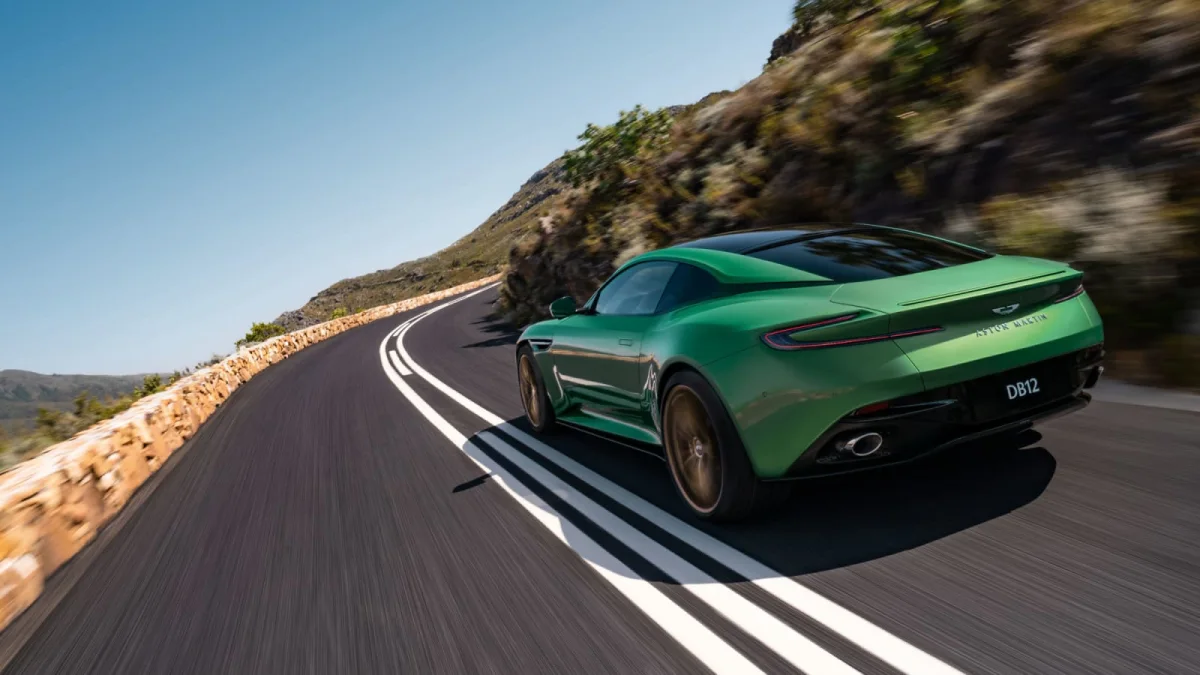
One of the tricks that the DB12 learned from its predecessor is its drivetrain layout. The V8 is front-mid-mounted, it’s almost entirely behind the front axle, and the gearbox is integrated into the rear axle in a transaxle configuration. This solution improves handling by evening out the weight distribution, which checks in at 48% front and 52% rear (the company quotes a dry weight of 3,715 pounds). Aston Martin then added a new suspension system with adaptive dampers, a redesigned (and well-weighted) steering system, and huge brakes (the carbon-ceramic setup fitted to my test car will be optional). All told, these ingredients combine to create a true driver’s car, one that you feel in tune with turn after turn, and one that delivers fun and agile handling without tilting towards the unpredictable or clumsy side of the scale.
The DB12 is truly enjoyable to drive, and it achieves this without overly relying on technology. On paper, this is a relatively simple car: there’s no hybrid boost, no four-wheel steering system, and no trick, 48-volt-powered suspension system. All-wheel-drive isn’t available; it’s not even mentioned next to a box on the list of options. This is an old-school, tried-and-true formula that Aston Martin has honed for decades.
Surprisingly sharp for a grand tourer and surprisingly comfortable for a supercar, the 2024 Aston Martin DB12 bridges the gap between two segments and comes out better for it. Luxury has been one of Aston Martin’s core values since its inception, but the DB12 expresses a newfound focus on performance that I’m told will permeate future additions to the company’s range. And, while a successor to the Rapide sedan has been ruled out, the brand’s product pipeline looks more like Monaco than rural France.
from "sexy" - Google News https://ift.tt/M20IOqN
via IFTTT
No comments:
Post a Comment